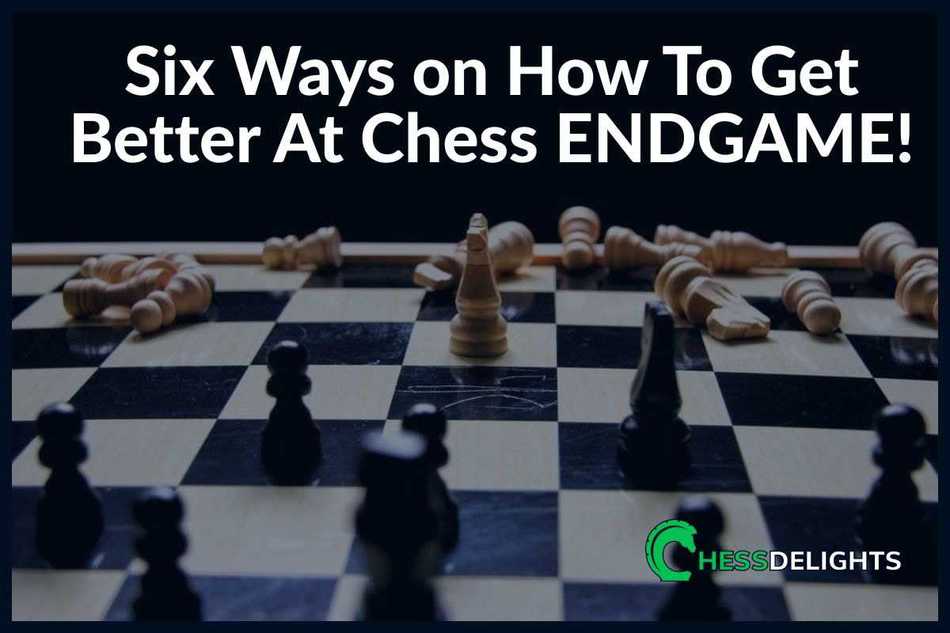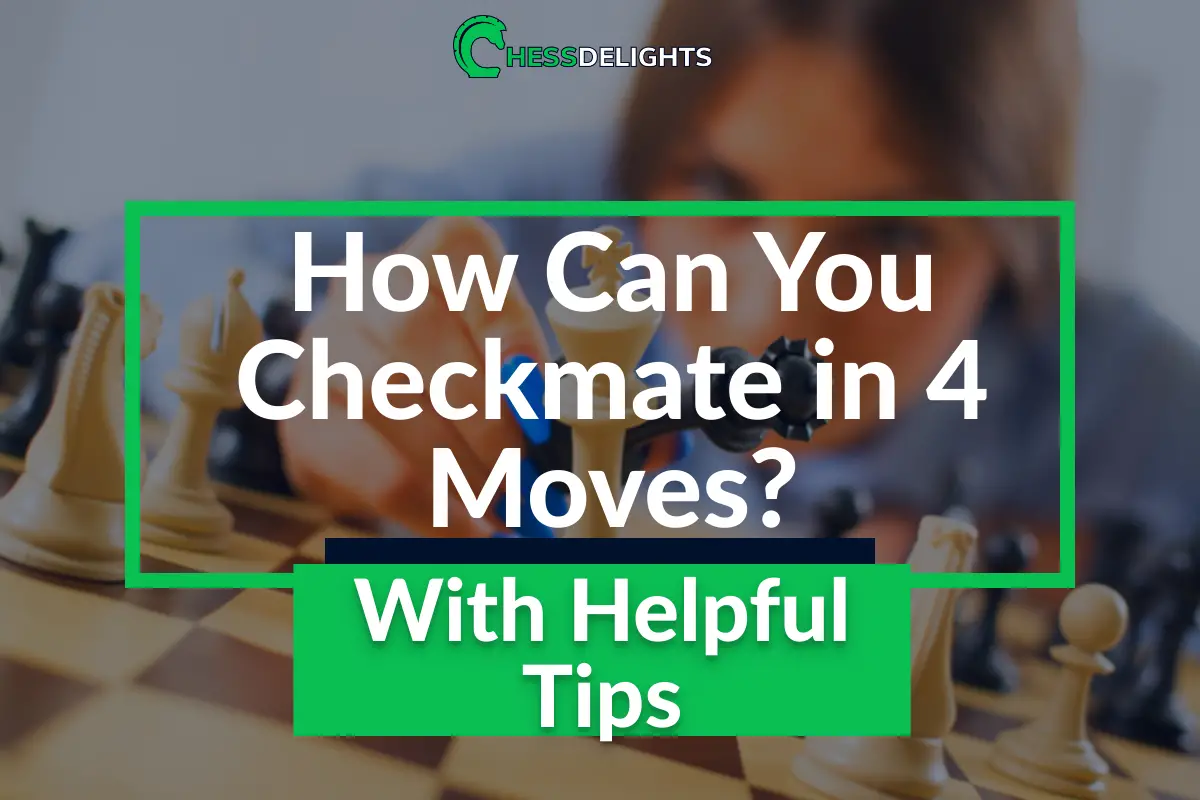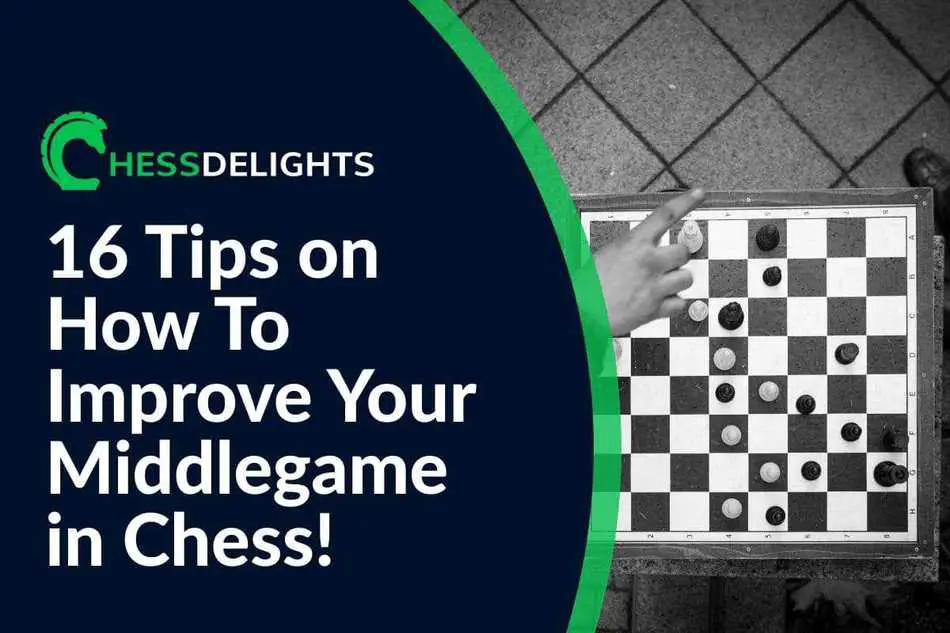Want to learn or teach your kids how to get better at chess end games? When I watch chess experts who play excellent end game strategies, I can't help but think and ask myself how did they come up with that strategy…
My daughter gets frustrated when she loses or gets a draw in a chess game even if she has a material advantage over her opponent. I can't help her that much because I'm not an expert in endgames, so I decided to study some important chess end game strategies for myself.
Because I understand that there are some important endgame strategies, we need to keep in mind when playing chess, especially in a chess tournament. Below are some of the ways to get better at chess endgame…
Table of Contents
6 Ways to Get Better at Chess EndGames
1. Study King, Pawn and Rook End Game
I commonly see Rook and Pawn End Game…don't you? Chess experts say that half of the time chess games end with a Rook and Pawn end game. Well, that's what I often see when I play chess game… 🙂
The reason maybe is because Rook develops later in the game and we usually have pawns left in every chess game.
So, learning how to win with King, Pawn, and Rook in end games is very important. What are the King, Pawn and Rook End Game strategies you should know about?
- Use your Rook to block check
- Perform a perpetual check
- Remove protection of King
- Push your opponents King away
- Place Rook behind Passed Pawn
Use your Rook to block check
You need to put your Rook in a square where you can block checks from your opponent. If possible, your Rook should be placed in the middle of the chess board ready to block checks.
Perform a perpetual check
Opposite from the above, when you are planning a draw – you need to create perpetual checks. When your opponent is attempting Queening of its pawn, one of the chances you may have is to force a draw by repetition or perpetual check.
Remove protection of King
One of the protection your opponent may use is its pawn; the only way to remove the protection is… You should be able to lead your opponents King out in the open, and then you can perform perpetual checks. You can force a draw by doing so.
Push your opponents King away
Once you have established your pawn ready for promotion – you first need to keep your opponents King away from your promoting pawn.
You need to have at least three or four square distance between your King and your opponents King. That is why you need to strategically use your King and Rook to push your opponent's King away.
Place Rook behind a Passed Pawn
Chess experts suggest that to possibly prevent an opponent's pawn promotions… You need to keep in mind that you need to place your Rook behind a passed pawn.
This may or may not work all the time but will surely give your opponent something to think about. So, this probably could set you up to win a lot of end games in your next chess game, especially if you end up with this Pawn, Rook End Game Strategy.
But some of the end game strategies you are going to learn below is not very common, but it is going to be very useful if you want to get better at end games. Okay, if you are ready, then continue reading…
Recommended : If you want to know where to start your chess journey, go to this page.
2. Learn two Bishops End Game
I never really studied two Bishops end game strategy before, and I never thought that this would be fun and easy to learn and teach to my daughter…
It just took me a few minutes to understand this end game strategy, and I was able to teach it.
What are the two Bishops End Game strategies you should know about?
- Place your Bishops in the center of the Board
- Place your King in line with your Bishops
- Put your two Bishops side by side
- Push your opponents King in a corner
Place your Bishops in the center of the Board
Whatever the initial position of your chess pieces, you should keep in mind that you need to place your bishops in the center of the board first.
This will cut off your opponents available square immediately and will be forced to move only at the middle of the board. This will set you up to activate your King.
Place your King in line with your two Bishops
Your King will be playing an important role in these two Bishops End Game strategy… So, you need to pay attention to this next move.
Your King should be in line with your two Bishops, at least one square apart from either the left side or right side.
The key is knowing where your two Bishops are going to be placed; if the two Bishops are on the right, then your King should be in the left side or if the two Bishops are on the left then your King should be in the right side.
Put your two Bishops side by side
The two Bishops are going to be placed side by side for this two Bishops End Game strategy to work.
The only thing you need to avoid is if your opponents King will be able to occupy a square that can attack your Bishops.
If that happens, then you just need to make a waiting move before you proceed with the side by side strategy with the Bishops.
Push your opponents King in a corner
Now that you have followed the right steps then all you need to do is push your opponent's King in the corner.
The mating process can be immediately seen once you have your opponent's King in a corner with only two squares available to move.
The only thing you need to be very careful is getting into a stalemate. You need to be wise and identify a possible Bishop check first before you try to cut the only two moves your opponent's King have.
Note: Remember before you can win with a checkmate you need to check your opponent's King first.
3. Learn Bishop and Knight End Game
Another not so common end game scenario has a Bishop and Knight. When you are playing with a Bishop and Knight against a lone King in an end game, you already know that you have a huge material advantage… But…
The problem is if you don't have any idea how to use Bishop and Knight in an End Game, then having a material advantage is useless.
It is important to know with Bishop and Knight End Game to become better in end games.
What are the Bishop and Knight End Game strategies you should know about?
- Use your Bishop and King first
- Centralize your chess pieces in a strategic way
- Corner your opponent's King with your Bishop's color
- Place the Knight diagonally with your Bishop
Use your Bishop and King first
When your opponent has a lone King, then it would be wise to avoid wasting moves. Remember the 50 move rule?
So, if you have a Bishop and Knight in an end game, and don't know what to move… The very first move would be to move either the King or Bishop first.
The goal is to restrict your opponent's King available square when doing that you would be having your King and Bishop close together.
Centralize your chess pieces in a strategic way
This one is cool; a chess expert recommends that the three materials should occupy the center by following these rules…
First, you need to put the Bishop and Knight in the same color as the center of the board.
Next is to put your King in the opposite color of the Bishop and place the King besides the Bishop. The idea is to keep your opponent's King away from the wrong corner?!
Corner your opponent's King with your Bishop's color
So, what is the wrong corner? The wrong corner would be related to what color your Bishop is…
If your Bishop's is on a white squared, then your opponent's King should be cornered on a white square to win, the same goes with having a dark-squared Bishop, you should corner your opponent's King on the dark squared.
Note: The corner would be on the last rank; it could be either a1, h1, a8, or h8 only.
Place the Knight diagonally with your Bishop
The only reason we need to place the Knight diagonally with your Bishop is to be able to maximize the squares that you can restrict your opponent's King.
The move cannot happen with just one move of your Knight; sometimes, your Knight needs to be placed in a square where it can be placed diagonally with the Bishop with its next move.
The Bishop and Knight End Game strategy can be tough and sometimes assumed to be a draw if the chess player does not know how this works. Just like any other checkmate attempts, you need to be aware of stalemate.
4. Learn Bishop or Knight vs. Lone Pawn End Game
What to do if you have one minor chess piece like Bishop or Knight in an end game? If you are thinking of learning how to checkmate with Knight and King only or Bishop and King only that would be a difficult task to accomplish… 🙂
But with a lone pawn, there is a considerable chance that you can promote the Pawn to a Queen and eventually win the game.
So, here what you need to learn is how to not lose a game with one minor chess piece like a Bishop or Knight vs. a lone pawn.
What are the Bishop or Knight vs. Lone Pawn End Game strategies you should know about?
- Stop pawn promotion immediately with your Bishop
- Place you Knight in front of the Lone Pawn
- Always force a draw with one minor chess piece
Stop pawn promotion immediately with your Bishop
When it's your move, and your opponent's lone pawn is attempting a promotion, you need to immediately be able to stop the pawn by attacking the square that the lone pawn is going to move forward.
Place your Knight in front of the Lone Pawn
The only way you can stop your opponent's lone pawn from getting promoted using your Knight is by placing your Knight in front of the lone pawn.
When you can do that correctly, then you are very much safe to get a draw against your opponent. Why would you go for a draw with a Knight? Well, its because checkmating your opponent's King with one Knight is very very very impossible.
So, just put your Knight in front of your opponent's Lone Pawn and force a draw.
Always force a draw with one minor chess piece
Your goal is always to force a draw when you only have one minor chess piece vs. a lone pawn.
You don't need to think of any unusual move; you need to take out the lone pawn and get a draw instead of losing with your opponent's lone pawn by getting promoted to a Queen.
5. Learn King and Queen End Game
This should be very easy to learn… You might already know how to win in an End Game using King and Queen but just wanted to include this in the list of becoming better with end games. What are the King and Queen End Game strategies you should know about?
- Force your opponent's King to the edge
- Maintain a safe distance with your Queen
- Move your King to a checkmating distance
Force your opponent's King to the edge
Forcing your opponent's King to the edge of the board is a tactic that we should learn and practice…
When you have a Queen, you can easily do that by blocking a file or a raw of your opponent's King.
You can do that by moving your Queen near your opponent's King in a safe distance.
Maintain a safe distance with your Queen
You need to be careful when you are trying to block your opponent's King… Because there is a possibility of a stalemate when you don't maintain a safe distance.
A safe distance would be like having two or three squares away from your opponent's King or what some chess expert says a Knight's distance with your opponent's King.
Maintain that, and you will avoid getting into a stalemate or draw with your opponent.
Move your King to a checkmating distance
Once you pushed your opponent's King to the edge of the board, and have maintained a safe distance, then it's time to move your King.
Move your King towards your opponent's King to finish the chess game with a checkmate by the Queen. This is the easiest way to win in the end game, and this is the one you should avoid getting into a stalemate.
6. Study the Doubled Pawn End Game
When I first learn how to play chess, I was told that having a-Doubled Pawn should be avoided… It is true, having a-Doubled Pawn can be a problem.
But this cannot be avoided, of course, the only thing I wanted to learn is how do I finish strong with having a-Doubled Pawn in an end game? What are the Doubled Pawn End Game strategies you should know about?
- Keep control of your Doubled Pawn
- Use your Doubled Pawn for an extra move
Keep control of your Doubled Pawn
When I was studying this end game, the most important thing you need to do is to keep control of your Doubled Pawn during an end game… A wrong move with your King will let your opponent's King capture one of your pawn.
And possibly take your second pawn as well, if you don't keep control of your Doubled Pawn. So, when you move your King, make sure that your King will be able to protect your Doubled Pawn when your opponent's King has the chance to come near them.
When you do that, you can now push your Doubled Pawn forward.
Use your Doubled Pawn for an extra move
Stalemate can happen often with Doubled Pawn End Game… The advantage of having an extra pawn is you have an extra move, that extra move will save you from avoiding a stalemate.
The best way to win Doubled Pawn end game is you should be familiar with King and Pawn end game as well. You only need to promote one pawn to win; if you are familiar with King and Pawn end game strategy, then you are better in end games. 🙂
Recommended reading: If you want learn how to checkmate in 4 moves, read this article.
Wrapping Up
Some chess matches don't reach this end game positions but having learned this end game strategy will set you or your student to have a better chance in winning.
We need to keep in mind that the end game is critical, and we should have the necessary foundation to avoid a draw or know particular groups of chess pieces that can perform a checkmate.
Just like the Bishop and Knight End Game strategy, honestly, I did not believe that we can win by checkmate using those two pieces plus the King together. Well, I do know that we can perform a checkmate, but I don't know how to do it.
That is a new knowledge for my daughter and me… 🙂 Anyway, I hope you like this article, if you have any comments or suggestions, please do type it below.
Have fun improving your chess end game strategies. 🙂





